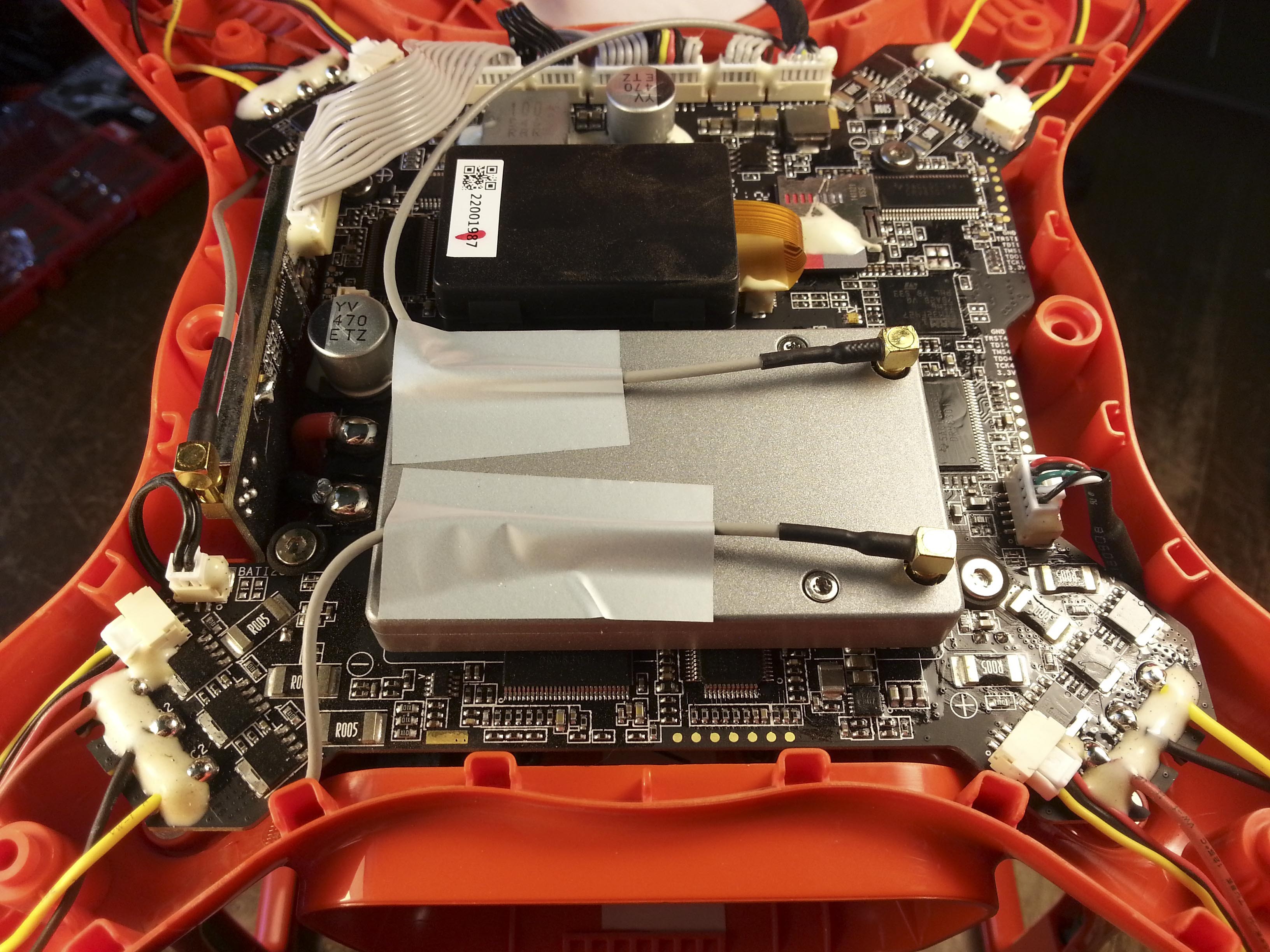The Autel X Star Premium drone boasts impressive features and performance. But what lies beneath its sleek exterior? This teardown explores the internal components of the Autel X Star Premium, including its unique 900MHz video transmission system and robust flight control hardware. Understanding these components can be crucial for repairs, modifications, and appreciating the engineering behind this powerful drone. This exploration focuses specifically on the Autel X Star Premium Shell and the technology housed within.
Inside the Autel X Star Premium Shell: Main Board and RF Modules
The Autel X Star Premium shell’s top half conceals the drone’s core: the main board. This single PCB integrates power distribution, ESCs, and the flight controller, much like the Phantom 3. Two key features stand out: the 900MHz video transmission system and the 5.8GHz control system.
The 900MHz system utilizes two sleeved dipole antennas cleverly concealed within the drone’s legs for video transmission diversity. This frequency choice avoids the congested 2.4GHz band, potentially offering a clearer signal. A single 5.8GHz sleeved dipole antenna, located on the front right leg, handles control and telemetry.
The 900MHz video RF module, housed in an aluminum shell, features an iTE IT9507FN HDTV digital video transmitter. This suggests the X Star Premium might use the DVB-T standard for video transmission, potentially allowing signal reception with a standard USB SDR TV tuner.
The 5.8GHz control module, a vertical board with a shielded can, includes test pads for probing communication between the flight controller and the radio. Notably, the control link lacks diversity, a potential vulnerability if the camera obstructs the single antenna’s line of sight to the controller.
Starpoint Positioning System: Optical Flow and Sonar
The Autel X Star Premium shell’s underside houses the “Starpoint Positioning System.” This system combines a downward-facing camera for optical flow and two ultrasonic transducers for precise positioning.
The optical flow camera estimates horizontal velocity by tracking ground movement, enhancing loiter stability, especially at low altitudes. The ultrasonic transducers emit 40KHz sound pulses to measure ground distance, aiding optical flow calculations and potentially improving altitude control. However, these transducers have limitations in range and effectiveness over certain surfaces.
4K Camera and Gimbal: Precision and Performance
The X Star Premium’s removable gimbal features a 4K camera with a cooling fan and a sophisticated stabilization system. Large gold-plated contacts ensure a secure connection to the drone body.
The gimbal’s intricate flat-flex cable connects to the roll and pitch control boards, each powered by a Microchip DSPIC33EP128MC504 Digital Signal Controller for precise motor control. The camera itself houses another STM32F427II processor, highlighting the processing power dedicated to image capture and stabilization.
Battery Charger: Balancing Act
The X Star Premium’s battery charger incorporates a unique cell balancing system within a sizable housing equipped with a cooling fan. This system utilizes four sets of 10Ω resistors to balance the 4-cell battery pack.
An Alpha & Omega AO4407A P-channel MOSFET controls charging in conjunction with the battery’s internal current sensing. This design suggests a focus on battery longevity and safe charging practices.
Conclusion: A Look Inside the Autel X Star Premium Shell
The Autel X Star Premium shell protects a complex and well-engineered system. From the unique 900MHz video transmission system to the sophisticated gimbal and cell balancing battery charger, the X Star Premium showcases Autel Robotics’ commitment to performance and innovation in the drone market. This teardown provides valuable insights into the technology that powers this impressive aerial platform.

